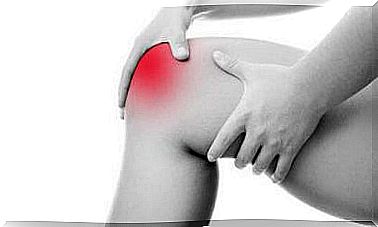Carbon Monoxide Poisoning: What To Do?

Carbon monoxide is a colorless, odorless, tasteless and very dangerous gas by burning gasoline, wood and coal, among various fuels. This combustion gives energy, for example, to cars, candles, gas cars and heating systems such as stoves. However, it is possible to suffer from carbon monoxide poisoning.
This substance, in fact, is a silent killer that poisons about 1500 people every year; of these, up to 200 die. Most of the cases can be avoided and is due to the incorrect use of a brazier or to the malfunction of gas instruments located in unsuitable or poorly ventilated environments.
How does carbon monoxide poisoning happen?
Monoxide can be accidentally inhaled in the home while doing daily activities such as cooking or turning on the heat due to a malfunction or improper maintenance. On the other hand, it can also be intentionally inhaled in case of suicides.
What are the effects of carbon monoxide on the body?
Cells circulate in our blood which are called erythrocytes or red blood cells. Erythrocytes contain a protein called hemoglobin, which is responsible for carrying oxygen. This protein collects breathed oxygen in the lungs and releases it to the tissues through the circulating blood.
The toxicity of carbon monoxide is a direct consequence of its greater compatibility with hemoglobin than with oxygen . Precisely for this reason it binds very well to hemoglobin and does not let oxygen enter the blood. Following this, the tissues are left without oxygen, causing a condition known as tissue hypoxia.

What symptoms does carbon monoxide intoxication produce?
The severity of symptoms depends on the amount of carbon monoxide breathed in and the duration of exposure. There are two types of carbon monoxide poisoning:
- Acute intoxication: when gas is inhaled in large quantities.
- Chronic poisoning: when low concentrations of carbon monoxide are inhaled for an extended period.
Symptoms are due to the absence of oxygen in the tissues. Among the many, we can mention the following:
- Headache.
- Dizziness.
- Weakness.
- Nausea and vomit.
- Stinging in the chest.
- Cardiac arrhythmia.
- Respiratory problems.
- Confusion.
- Drowsiness.
If not done in time, it can induce a coma. It is particularly dangerous for people who are intoxicated or who are sleeping, as they could suffer irreversible brain damage or even die before anyone notices the problem.
On the other hand, in cases of chronic intoxication, the symptoms may not be as obvious and can cause severe long-term ailments. The latter particularly affect the brain:
- Learning and memory difficulties.
- Mood swings: among them depression.
- Mood and senses disturbances: difficulty in movement, loss of sensation, etc.
In most cases we do not associate these symptoms with carbon monoxide, since, as we said, it is odorless, colorless and tasteless.

What should i do if i suffer from carbon monoxide poisoning?
If you think you are intoxicated by carbon monoxide you must do the following:
- Exit the building where the gas leak occurred.
- Open doors and windows to get some fresh air and dissolve the carbon monoxide.
- Turn off stoves, ovens, heaters and gas appliances.
Once the source of the intoxication has been removed, one must call the emergency room or go there. In the hospital we will undergo the necessary analyzes to check for the presence of monoxide in the blood and proceed with the appropriate treatment.
Therapy in the hospital
Treatment consists of administering pure oxygen to dissolve carbon monoxide from hemoglobin. The oxygen is administered through a special mask, on the nose and mouth, and will reach the tissues.
iperbaric room
In some cases, the intoxicated person is taken to a hyperbaric chamber. Treatment consists of breathing oxygen into a chamber at a much higher pressure than normal. This speeds up the replacement of monoxide with oxygen.
How to prevent carbon monoxide poisoning?
According to the Centers for Disease Control and Prevention (CDC), the following measures can be taken:
- All domestic combustion systems must be installed correctly and be maintained and used in the correct way.
- House fireplaces and smoke chambers must be checked and cleaned every year.
- Ovens, water heaters and dryers must be inspected annually by a trained technician.
- Combustion stoves without an air vent should only be used in the presence of an expert and the doors and / or windows of the room should be opened to let in fresh air.
- The car recycling facility should be inspected regularly for blockages or defects, especially in winter.
Lastly, and most importantly, a battery-powered carbon monoxide alarm should be installed in the home. These will have to be revised every time the timetable changes in spring and autumn. If the alarm sounds, you will need to leave the house and call the emergency room.









